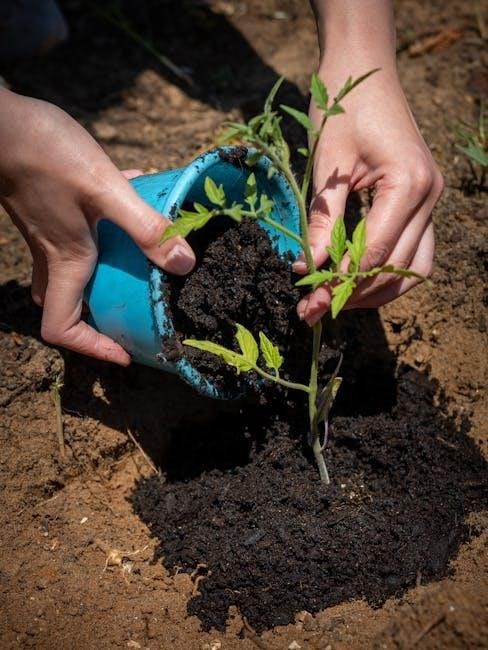manual calculo para doblar tubos

Manual pipe bending is a fundamental process in plumbing and manufacturing‚ involving shaping tubes to precise angles without welding. It ensures cost-effectiveness‚ precision‚ and durability in various applications.
1.1 Overview of Pipe Bending
Pipe bending is a critical process in manufacturing and plumbing‚ involving the manipulation of tubes to form specific angles or curves. It is essential for creating custom fittings‚ installing piping systems‚ and fabricating structural frameworks. Manual pipe bending‚ in particular‚ relies on precise calculations and techniques to achieve desired shapes without damaging the material. This method is highly valued for its cost-effectiveness and versatility‚ especially in scenarios where automated solutions are impractical. The process involves understanding the properties of the pipe material‚ such as flexibility and strength‚ to ensure accurate and durable results. Proper tools and safety measures are paramount to prevent errors and potential hazards.
1.2 Importance of Manual Pipe Bending
Manual pipe bending holds significant importance in various industries due to its precision and adaptability. Unlike automated methods‚ manual bending allows for customized solutions‚ making it ideal for unique projects with specific requirements. It is particularly valuable in small-scale operations or when access to advanced machinery is limited. Additionally‚ manual techniques enable craftsmen to achieve intricate bends that might be challenging with mechanical tools. This method also promotes skill development and problem-solving‚ as it requires a deep understanding of material properties and bending mechanics. Furthermore‚ manual pipe bending is cost-effective‚ reducing reliance on expensive equipment and enabling efficient workflow in both industrial and DIY settings. Its applications span across plumbing‚ automotive‚ and decorative metalwork‚ highlighting its versatility and enduring relevance.

Materials and Tools Required
Essential materials include high-quality steel or PVC pipes‚ while tools like pipe benders‚ measuring tapes‚ and clamps are crucial for precise manual bending operations.
2.1 Types of Pipes for Bending
Steel‚ copper‚ PVC‚ and aluminum pipes are commonly used for bending due to their flexibility and durability. Steel pipes are ideal for high-stress applications‚ while copper pipes are favored for plumbing due to their corrosion resistance. PVC pipes are lightweight and flexible‚ making them suitable for low-pressure systems. Aluminum pipes are another popular choice‚ offering excellent strength-to-weight ratios and resistance to rust. The choice of pipe material depends on the specific application‚ environmental conditions‚ and required strength. Proper material selection ensures safety‚ longevity‚ and optimal performance in manual bending processes.
2.2 Essential Tools for Manual Pipe Bending
Manual pipe bending requires specific tools to achieve precise and safe results. A pipe bender is the primary tool‚ available in manual or hydraulic versions‚ designed to shape pipes without causing kinks. Tubing cutters are used to cut pipes to the desired length accurately. Pipe vises or clamps are essential for holding the pipe securely during the bending process. Marking tools‚ such as calipers and protractors‚ help measure and mark the exact bending points. Safety equipment‚ including gloves and goggles‚ is crucial to protect against injuries. Additional tools like pipe cleaners and deburring tools ensure the pipe is prepared for bending. These tools collectively enable efficient and accurate manual pipe bending‚ ensuring the pipe retains its structural integrity and desired shape.

Safety Measures
Manual pipe bending requires strict safety protocols to prevent injuries. Protective gear like gloves and goggles is essential. Proper handling techniques ensure safe bending operations and tool maintenance prevents accidents.
3.1 Safety Equipment for Pipe Bending
When performing manual pipe bending‚ it is crucial to use proper safety equipment to minimize risks. Essential items include gloves‚ safety goggles‚ and steel-toe boots to protect against injuries from sharp edges or falling tools. A face shield or safety glasses with side protection are recommended to guard against flying debris. Additionally‚ wearing long sleeves and durable pants can prevent skin abrasions. Hearing protection is also necessary if power tools are involved. Properly maintained tools and equipment ensure safe operations‚ while a clean workspace reduces tripping hazards. Regular training on safety protocols and equipment maintenance further enhances workplace safety‚ ensuring a secure environment for manual pipe bending tasks.
3.2 Best Practices to Avoid Injuries
To ensure a safe manual pipe bending process‚ adhere to best practices that minimize injury risks. Always inspect tools and equipment before use to identify any damage or wear. Use proper lifting techniques to avoid strain‚ and never handle sharp or hot pipes without appropriate protection. Maintain a clean and well-lit workspace to reduce tripping and slipping hazards. Ensure proper clamping of the pipe to prevent sudden movements during bending. Avoid overreaching or stretching while bending‚ as this can lead to loss of control. Regular training on proper techniques and safety measures is essential to prevent accidents. Additionally‚ follow manufacturer guidelines for all tools and equipment to guarantee safe and effective operations.

Understanding Pipe Bending Calculations
Mastering pipe bending calculations is crucial for precise results. Geometry‚ material properties‚ and bend angles must be considered to achieve accurate bends and avoid material damage.
4.1 Basic Mathematical Concepts
Understanding basic mathematical concepts is essential for manual pipe bending. Geometry plays a central role‚ particularly the properties of circles and triangles. The circumference of a circle‚ calculated using the formula 2πr‚ helps determine the length of the pipe needed for a bend. The relationship between the radius‚ diameter‚ and arc length is critical for precise calculations. Additionally‚ trigonometry is used to calculate angles and bend degrees‚ ensuring accurate results. These principles form the foundation for more complex calculations‚ such as bend radius and stress analysis. Mastery of these concepts ensures that bends are executed correctly and safely‚ avoiding material deformation or breakage.
4.2 Calculating Bend Radius and Angle
Calculating the bend radius and angle is crucial for achieving precise and safe manual pipe bends. The bend radius is the distance from the pipe’s center to the inside of the bend‚ often expressed as a multiple of the pipe’s diameter. The bend angle‚ typically measured in degrees‚ determines how sharply the pipe is curved. To calculate these‚ formulas such as ( R = rac{D}{2} ) for the radius and ( heta = rac{L}{R} ) for the angle (where ( L ) is the arc length and ( R ) is the radius) are commonly used. These calculations ensure the bend meets design specifications and prevents material damage. Proper measurement and formula application are vital to avoid errors and achieve desired results.
4.3 Stress Considerations in Pipe Bending
Stress considerations are critical in manual pipe bending to ensure the pipe’s integrity and prevent failure. Bending induces tensile stress on the outer curve and compressive stress on the inner curve‚ which can lead to material deformation or cracking. The stress level depends on the bend radius‚ angle‚ and material properties. A smaller bend radius increases stress‚ while thicker-walled pipes are more resistant to deformation. Calculating the maximum allowable stress using material yield strength and bend geometry is essential. Overbending can cause work hardening‚ making the pipe brittle. Proper tooling and techniques help distribute stress evenly‚ minimizing the risk of damage. Always consult material specifications to ensure safe bending limits and avoid structural compromise.
4.4 Springback Calculation

Springback calculation is essential in manual pipe bending to predict how much a pipe will return to its original shape after bending. This elastic recovery occurs due to the material’s inherent elasticity. The degree of springback depends on the pipe’s material‚ bend radius‚ and thickness. To calculate springback‚ use the formula: Springback (SB) = (Modulus of Elasticity / Ultimate Tensile Strength) × (Bend Radius / Wall Thickness). A higher modulus of elasticity or smaller bend radius increases springback. To compensate‚ slightly over-bend the pipe or use a smaller bend radius. Accurate springback calculation ensures precise bends‚ especially in materials like stainless steel or aluminum‚ which exhibit higher elasticity. Proper adjustment prevents dimensional inaccuracies and ensures the desired bend angle is achieved.

Step-by-Step Guide to Manual Pipe Bending
Learn to bend pipes manually with precision: prepare tools‚ measure‚ mark‚ clamp‚ bend‚ and inspect. Follow steps to achieve accurate‚ professional results consistently.
5.1 Selecting the Right Tooling
Selecting the right tooling is critical for manual pipe bending. Start by choosing a bender suitable for the pipe’s diameter and material. Use dies or bending shoes designed for your specific pipe type to ensure smooth‚ precise bends. Consider the bend radius required and match it with the correct die size. Always reference the manufacturer’s guidelines for tool compatibility. Proper tooling prevents pipe damage and ensures safety. For softer materials‚ like copper or aluminum‚ consider using a pipe conditioner to avoid kinking. Finally‚ ensure all components are securely attached to the bender and aligned properly before starting the bending process. The right tooling guarantees professional results and minimizes the risk of errors or material waste.
5.2 Measuring and Marking the Pipe
Accurate measurement and marking are essential for precise pipe bending. Start by measuring the length of the pipe and determining the exact point where the bend will occur. Use a tape measure or caliper for precise measurements. Mark the bend location clearly with a marker or soapstone‚ ensuring visibility. Double-check your measurements to avoid errors. For complex bends‚ divide the pipe into segments and mark each bend point carefully. Align the marks with the bending die to ensure proper orientation. Use a spirit level to ensure the marks are straight‚ especially for vertical bends. Clean the pipe surface before marking to ensure accuracy. Proper measurement and marking are the foundation of successful manual pipe bending‚ reducing the risk of costly mistakes and ensuring the desired results.
5.3 Clamping the Pipe
Clamping the pipe securely is crucial for achieving accurate bends and preventing damage. Use a clamp or bending fixture specifically designed for your pipe size and material. Position the clamp tightly around the pipe‚ ensuring it is centered on the marked bend point. Apply even pressure to avoid warping or indenting the pipe. For thin-walled pipes‚ use a clamp with padded jaws to prevent crushing. Double-check the clamp’s alignment with the bending die before proceeding. Proper clamping ensures stability during the bending process‚ allowing for consistent results. Always follow the manufacturer’s guidelines for clamp force and positioning to guarantee safety and precision. Proper clamping techniques are vital for successful manual pipe bending.
5.4 Bending the Pipe
Bending the pipe requires careful application of force using a bending die or lever. Align the pipe with the bending die‚ ensuring the marked center lines match. Apply steady‚ consistent pressure to the bending lever or hydraulic system‚ gradually forming the desired angle. Monitor the bend using a protractor or angle gauge to achieve precision. For thin-walled pipes‚ consider using a bending spring to prevent kinking. Maintain the pipe in position until the bend is complete to avoid springback. Always follow the tool manufacturer’s instructions for force limits and bending speeds. Proper technique ensures a smooth‚ accurate bend without damaging the pipe material. Safety and precision are key during this critical step of manual pipe bending.

5.5 Inspecting the Bend
After bending‚ inspect the pipe to ensure accuracy and quality. Use a protractor or angle gauge to verify the bend angle matches the calculated specifications. Check the radius with calipers to confirm it meets design requirements. Visually examine the pipe for surface defects‚ such as wrinkles‚ cracks‚ or excessive thinning. Ensure the bend is smooth and free from deformation. Measure the pipe’s overall length and alignment to confirm proper positioning. If necessary‚ use a bending inspection gauge for precise verification. Document the results for quality control and make adjustments if deviations are found. Accurate inspection ensures the bend meets project specifications and maintains structural integrity. Proper evaluation prevents potential failures in application. Always prioritize thorough inspection to guarantee reliability and safety in the final product.

Common Challenges and Solutions
Common challenges include material limitations‚ achieving precise bends‚ and managing springback. Solutions involve using specialized tools‚ precise calculations‚ and iterative adjustments to achieve desired results effectively;
6.1 Overcoming Material Limitations
When manually bending pipes‚ material limitations can pose significant challenges. For instance‚ certain materials like thick-walled pipes or hard alloys may resist bending due to their rigidity or strength; To address this‚ selecting the right tooling and techniques is crucial. Using heat can make the material more pliable‚ reducing the risk of cracking or breaking. Additionally‚ employing incremental bending methods ensures even stress distribution. For materials prone to springback‚ applying controlled force and adjusting the bending radius can help achieve the desired shape. Proper material selection and pre-bending treatments‚ such as annealing‚ can also enhance flexibility. By understanding the specific properties of the pipe material‚ one can apply tailored solutions to overcome these limitations effectively.
6.2 Fixing Incorrect Bends
Incorrect bends can occur due to misalignment‚ improper force application‚ or miscalculations. To fix such issues‚ begin by assessing the severity of the bend. If the pipe is only slightly misshapen‚ it may be possible to adjust it manually using specialized tools like bend adjusters or by re-clamping and re-bending carefully. For more significant errors‚ cutting and rejoining the pipe may be necessary. Always ensure the pipe is within acceptable tolerance levels before proceeding. Using precision measuring tools‚ such as calipers or protractors‚ helps verify the bend angle and radius. Preventing errors upfront through accurate calculations and consistent technique minimizes the need for corrections. Proper documentation of the bending process can also aid in identifying and resolving issues more efficiently.

Applications of Manual Pipe Bending
Manual pipe bending is essential in plumbing‚ automotive repairs‚ and custom fabrication. It enables precise shaping for industrial machinery‚ HVAC systems‚ and DIY projects‚ ensuring functionality and durability.
7.1 Industrial Applications
Manual pipe bending is widely used in various industrial sectors for creating precise and customized piping systems. In automotive manufacturing‚ it is employed for fabricating exhaust systems‚ fuel lines‚ and brake pipes. Aerospace industries utilize manual bending for crafting lightweight‚ high-strength tubing for aircraft fuel systems and hydraulic lines. HVAC systems rely on manual bending for ductwork and refrigerant lines‚ ensuring efficient airflow and thermal management. Additionally‚ oil and gas industries use manual pipe bending for creating complex piping layouts in refineries and pipelines. The ability to bend pipes manually allows for on-site adjustments‚ reducing the need for pre-fabricated components and enabling tailored solutions for industrial machinery and infrastructure.
- Automotive: Exhaust systems‚ fuel lines‚ and brake pipes.
- Aerospace: Lightweight tubing for aircraft systems.
- HVAC: Ductwork and refrigerant lines.
- Oil and Gas: Complex piping layouts in refineries.
7.2 DIY and Hobbyist Projects
Manual pipe bending is a versatile skill for DIY enthusiasts and hobbyists‚ enabling the creation of custom projects with precision and creativity. It is commonly used in home repairs‚ such as fixing or installing plumbing lines‚ and in crafting decorative items like handrails or furniture frames. Hobbyists often apply manual bending to build custom bike frames‚ motorcycle handlebars‚ or automotive modifications. Additionally‚ it is useful for creating garden ornaments‚ greenhouses‚ or other structural projects. The ability to bend pipes manually allows individuals to bring their unique ideas to life without relying on prefabricated solutions‚ making it a valuable skill for creative and practical applications.
- Home repairs and plumbing installations.
- Decorative items like handrails and furniture.
- Custom bike frames and motorcycle modifications.
- Garden ornaments and greenhouse structures.

Advanced Techniques
Advanced techniques in manual pipe bending involve precision methods for complex geometries‚ variable radii‚ and multi-plane bends. These techniques enhance the accuracy and versatility of bending projects.
8.1 Multiple Bends in a Single Pipe
Creating multiple bends in a single pipe requires precise planning and execution to ensure accuracy and structural integrity. This advanced technique is often used in complex piping systems where multiple directional changes are necessary. To achieve this‚ manual calculations must account for factors like pipe material‚ wall thickness‚ and desired angles. Using specialized tools‚ such as tube benders with adjustable dies‚ allows for multiple bends without damaging the pipe. Sequential bending‚ where each bend is made in a specific order‚ helps maintain the pipe’s integrity. Proper alignment and spacing between bends are critical to avoid kinking or flattening. This method is commonly used in applications like custom exhaust systems‚ industrial pipe networks‚ and architectural metalwork‚ where intricate designs are required.
8.2 Bending Different Pipe Materials
Bending various pipe materials requires understanding their unique properties and applying appropriate techniques. Steel pipes‚ for instance‚ may need heating to prevent cracking‚ while copper pipes are more malleable but prone to kinking. PVC pipes are flexible but can become brittle under stress. Aluminum pipes offer excellent ductility but may require specific dies to avoid tearing. Each material demands tailored approaches‚ such as adjusting bending force‚ die size‚ and lubrication. For stainless steel‚ springback is a key consideration. Proper material-specific calculations ensure precise bends without compromising structural integrity. Using the right tools and techniques for each material is essential for achieving professional results in manual pipe bending projects.
Mastering manual pipe bending calculations ensures precise‚ safe bends. This skill blends art and science‚ vital for various applications. Apply techniques responsibly for professional results.
9.1 Key Takeaways
Manual pipe bending requires precise calculations to achieve accurate results. Understanding material properties and bend radius is crucial for successful bends. Always use appropriate tools and follow safety guidelines to prevent injuries. Proper clamping and alignment ensure consistent outcomes. Regular inspection of bends helps maintain quality. Practice and patience are essential for mastering the technique. By adhering to these principles‚ manual pipe bending becomes efficient and reliable for various applications.
9.2 Future Trends in Pipe Bending
The future of manual pipe bending is poised for transformation with advancements in technology. CNC machines and automation are expected to complement manual techniques‚ enhancing precision and efficiency. New materials‚ such as advanced alloys and composites‚ will require updated bending methods. Sustainability will play a key role‚ with eco-friendly practices becoming standard. AI integration may optimize bend calculations‚ reducing waste and improving accuracy. Additionally‚ collaborative robots (cobots) could assist in manual bending processes‚ ensuring safety and consistency. These trends will reshape the industry‚ making manual pipe bending more efficient and adaptable to modern demands.
Leave a Reply
You must be logged in to post a comment.